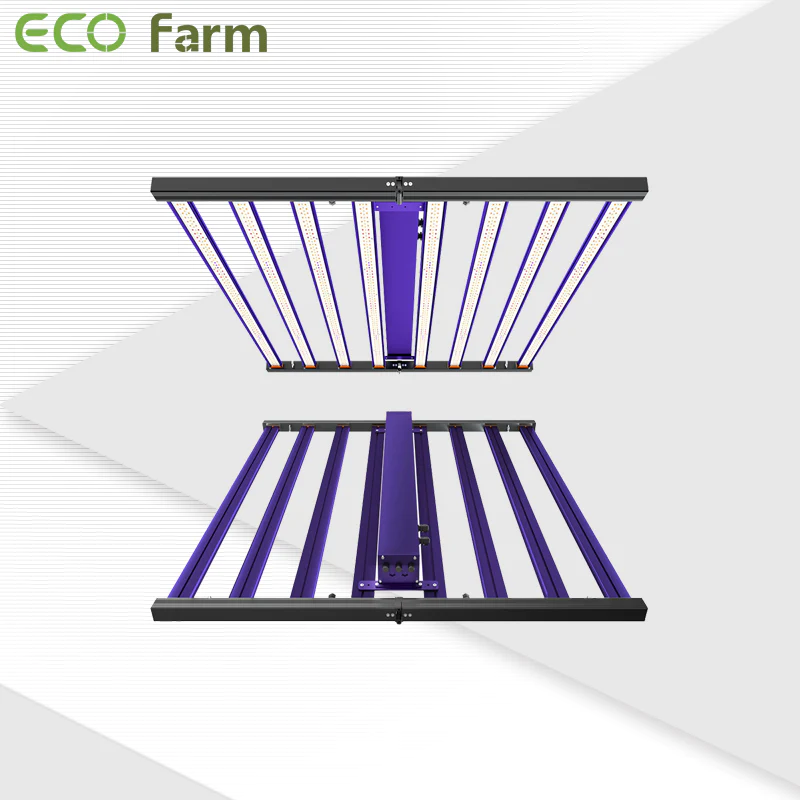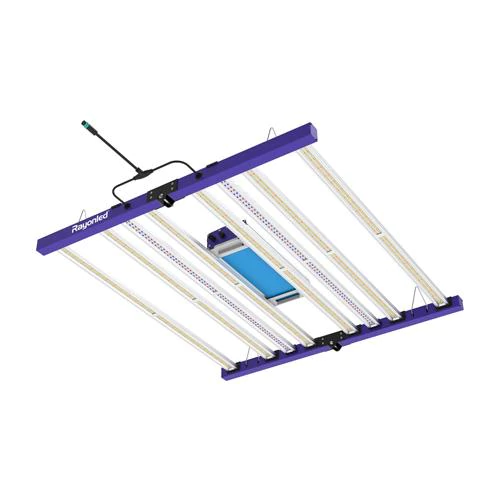- Home
- SHOP ECO FARM
-
TOP BRANDS
-
Grow Lights Brands
- Adjust-A-Wing
- Apollo Horticulture
- Bestva
- Black Dog LED
- California Lightworks
- ChilLED Grow Light
- Eco Farm
- HLG - Horticulture Lighting Group
- Kingled
- Kind LED
- Mars Hydro
- Morsen
- Neilo
- NextLight
- Phlizon
- PlatinumLed
- Roleadro
- Optic LED Grow Lights
- ViparSpectra
- Vivosun
- EYE Hortilux
- IPOWER
- NanoLux
- Phantom grow light
- Gavita grow lights
- Grower's Choice
- Lumatek
- Maxibright
- Yearld Pro
- ThinkGrow
- Crecer Lighting
- Green Sunshine Electric Sky
- fohse aries
- loriflux
- luxx
- fluence
- iluminar
- Lex
- LTC
- Rayonled
- FGI
- PHOTONTEK
- Grow Tents & Kits Brands
- Extraction & Harvest Brands
- Climate Control & Hydroponic Brands
-
Grow Lights Brands
- COMPANY INFO
- COOPERATE WITH US
- Blog
- Sign in
- Home
-
SHOP ECO FARM
- ECO Farm Grow Lights
- ECO Farm LED Grow Lights
- ECO Farm Quantum Board
- ECO Farm Samsung LED Grow Lights
- ECO Farm COB Grow Lights
- ECO Farm Commercial Lights
- ECO Farm Supplemental Grow Light
- ECO Farm Fluorescent grow lights
- ECO Farm HPS & MH Grow Lights
- ECO Farm CMH Grow Lights
- ECO Farm HID/CMH Bulbs & Ballasts
- ECO Farm Grow Tents & Kits
- ECO Farm 2x2ft Grow Kits
- ECO Farm 3x3ft Grow Kits
- ECO Farm 3.3x3.3ft Grow Kits
- ECO Farm 4x4ft Grow Kits
- ECO Farm 5x5ft Grow Kits
- ECO Farm Grow Tent - Standard Style
- ECO Farm Grow Tent - Extension & Roof & Lodge Style
- ECO Farm Extraction & Harvest
- ECO Farm Rosin Press Machine
- ECO Farm Dry & Wet Trimmers
- ECO Farm Oil Accessories
- ECO Farm Medicinal Plants Grinder
- ECO Farm Medicinal Plants Containers
- ECO Farm Medicinal Plants Dryer
- ECO Farm Refrigeration Dryer
- ECO Farm Climate Control & Other Accessories
- ECO Farm Inline Duct Fans
- ECO Farm Oscillating Fans
- ECO Farm Exhaust Fans
- ECO Farm Air Filter
- ECO Farm Duct Muffler
- ECO Farm Ventilation Kits
- ECO Farm Plant Humidifiers
- ECO Farm Plant Dehumidifiers
- ECO Farm Hydroponic Accessories
- ECO Farm Other Accessories
- ECO Farm Hydroponics Microscopes
-
TOP BRANDS
- Grow Lights Brands
- Adjust-A-Wing
- Apollo Horticulture
- Bestva
- Black Dog LED
- California Lightworks
- ChilLED Grow Light
- Eco Farm
- HLG - Horticulture Lighting Group
- Kingled
- Kind LED
- Mars Hydro
- Morsen
- Neilo
- NextLight
- Phlizon
- PlatinumLed
- Roleadro
- Optic LED Grow Lights
- ViparSpectra
- Vivosun
- EYE Hortilux
- IPOWER
- NanoLux
- Phantom grow light
- Gavita grow lights
- Grower's Choice
- Lumatek
- Maxibright
- Yearld Pro
- ThinkGrow
- Crecer Lighting
- Green Sunshine Electric Sky
- fohse aries
- loriflux
- luxx
- fluence
- iluminar
- Lex
- LTC
- Rayonled
- FGI
- PHOTONTEK
- Grow Tents & Kits Brands
- Apollo Horticulture
- Black Box
- CoolGrows
- Eco Farm
- GrowLab
- Gorilla Grow Tents
- Mars Hydro
- Quictent
- Secret Jardin
- Unit Farm
- TopoGrow
- VIVOSUN
- Topolite
-
COMPANY INFO
-
COOPERATE WITH US
- Blog
ECO Farm ECO D700 700W Samsung LM281B Chip LED Grow Light VS RayonLED GLMF-720W FOLDABLE LED Grow Light
September 07, 2022
During these shorter winters, with less light coming through your windows, you may wonder if your plants are getting what they need to thrive. While this season’s weaker light may be enough for some houseplants, others need a boost to keep growing. Still others, like garden seedlings and flowering plants, may require more intense light than your home provides.
If you’re considering introducing artificial light into your home, here’s what you need to know.
Why people choose LED over HPS
LED lights are a popular type of grow light for plants, and they can be used all year round to grow plants. LED grow lights produce only low amounts of heat which means they have minimal risk of burning shade cloth or other flammable items in your grow tent.
I personally use LED grow lights for my indoor plants and recommend using them instead of HPS due to the lower heat levels alone.
Since LED lights promote plants growth at lower temperatures, the plants require less water as they’re not at risk of drying out from exposure to high heat.
LED lights are also beneficial from an affordability angle because they can last for 50,000 hours or more, making them an even more economical option than HPS lights if you want to maximize your plants yield.
LED grow lights are not without drawbacks. These lights can cause what’s known as a light burn on your plants, which can cause the plant’s leaves to turn yellow and white. To reduce the risk, ensure that you place your plants about 12–18 inches (30–45 cms) away from the lights.
LED lights are generally better for plants than HPS lights, even though both have pros and cons. When planted underneath LED grow lights alone, plants typically grow abundantly.
ECO Farm ECO D700 700W Samsung LM281B Chip LED Grow Light

Features:
This ECO Farm LED grow light has the highest output of white chip and Osram chip, with high energy efficiency of 2.6 umol/J, PPF 1820 µmol/s, LED grow light provides plants with powerful and high quality light to maximize the Yield. The vegetable footprint is 5 x 5 feet and the flowering footprint is 4 x 4 feet. With an excellent full spectrum (3000K, 5000K, 660nm, 730nm IR, 395nm UV), it can make the light more uniform, truly simulate sunlight, and perfectly meet the entire growth cycle of all plants from seed to harvest, resulting in higher yields. The dimming knob can adjust the light intensity at will (from 0% to 100%), and the daisy chain can be up to 100 units, which easily meets the plant development process, including germination, nutrition, flowering, and fruiting. Foldable for easy placement and portable installation, the adjustable adapter has an RJ45 interface, which can control multiple plant lights in series, which is convenient for you to plant in a large area.
RayonLED GLMF-720W FOLDABLE LED Grow Light

Features:
With its impressive expertise in LED technology, this medical-grade device has everything to appeal to hobby and commercial growers. The RayonLed grow light is designed to replace and surpass the results of 1000W HID fixtures. What’s more, the fixture has a dedicated UV-IR strip that can be controlled independently. From spectrum to certification, it’s engineered to compete with the top grow lights on the market. Passively cooled light bars provide full spectrum, broad coverage light for long-term growth. High output 1944 µmols PAR! and an impressive efficacy of 2.7 µmol/s per watt. The unit features UV and far-red light strips to provide the most complete spectrum on the market today! IP65 certification allows lights to function and last in even the wettest grow rooms
Buying Guide
Are you thinking of purchasing a LED grow light for your commercial plants grow? If so, you’re in the right place. In this guide, we will walk you through everything you need to know before making your purchase.
Types of LED Grow Lights
There are a few different types of LED grow lights on the market. The three most common types are:
1. Panel LED Grow Lights
Panel LED grow lights are the most common type of LED grow light. They are a rectangular panel that typically measures between 2 and 4 square feet. Panel LED grow lights are a good option for small to medium-sized grows.
2. UFO LED Grow Lights
UFO LED grow lights are a type of panel LED grow light that is shaped like a UFO. UFO LED grow lights are a good option for larger grows.
3. Strip LED Grow Lights
Strip LED grow lights are a long, thin strip that typically measures between 1 and 2 feet in length. Strip LED grow lights are a good option for small grows.
What to Look for in a LED Grow Light
When looking for a LED grow light, there are a few things you should keep in mind:
1. Watts
When choosing a LED grow light, you will need to choose a light that has the correct wattage. LED grow lights come in a variety of wattages, so you will need to choose a light that has the correct wattage for your grow.
2. Spectrum
When choosing a LED grow light, you will also need to choose a light that has the correct spectrum for your grow. LED grow lights come in a variety of spectrums, so you will need to choose a light that has the correct spectrum for your plants.
3. Size
When choosing a LED grow light, you will need to choose a light that is the correct size for your grow. LED grow lights come in a variety of sizes, so you will need to choose a light that is the correct size for your grow.
4. Efficiency
When choosing a LED grow light, you will also need to choose a light that is efficient. LED grow lights come in a variety of efficiencies, so you will need to choose a light that is efficient for your grow.
Conclusion
In recent years, the popularity of LED plant lights has continued to increase. Although growers find that the initial investment is higher than HPS, LED grow lights are more efficient in the long run.
LED grow lights are more efficient because they have a wider spectrum, use less energy to produce the same amount of light, provide better uniformity and coverage, last longer, cost less electricity, and reduce heat by 40% % and more importantly provide higher yields and compare quality yields. Thanks for reading!
Also in Indoor Grow LED Grow Light
HLG Greenhouse Pro HE HV 630W LED Grow Light VS Geeklight grow light 480W hydroponic led grow light
October 20, 2023
